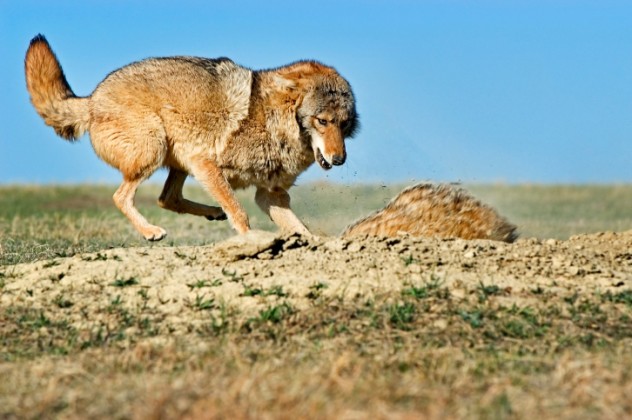10Ravens Guide
Wolves To Prey

In the past, gray wolves were considered
too dangerous to tolerate and were nearly
annihilated in North America by the 1970s.
Populations have been recovering since
then. Their reintroduction to Yellowstone
National Park has had a beneficial and
stabilizing effect on the local ecosystem,
particularly where scavengers during the
winter months are concerned.
Even without wolves, many herbivores still
die of starvation toward the end of winter.
While this provides an initial feast for
scavenging animals, much of the meat
ultimately goes to waste as only so much
can be consumed before it’s all too
decomposed. With wolves added back in,
herbivore death is more spaced out while
still providing ready meals for scavengers
since, unlike other animals such as bears,
wolves tend to move away from their kill
after they’ve eaten their fill.
die of starvation toward the end of winter.
While this provides an initial feast for
scavenging animals, much of the meat
ultimately goes to waste as only so much
can be consumed before it’s all too
decomposed. With wolves added back in,
herbivore death is more spaced out while
still providing ready meals for scavengers
since, unlike other animals such as bears,
wolves tend to move away from their kill
after they’ve eaten their fill.
Ravens have learned to maximize the
benefits of wolf leftovers. During winter,
they’ll land and croak near prey in order
to get wolves’ attention, guiding them to
their next meal. Of course, this places
the raven in a prime position to feast on
the leftovers. Perhaps as a result,
wolves have also been noted to be
surprisingly tolerant of ravens feeding
close to them.
benefits of wolf leftovers. During winter,
they’ll land and croak near prey in order
to get wolves’ attention, guiding them to
their next meal. Of course, this places
the raven in a prime position to feast on
the leftovers. Perhaps as a result,
wolves have also been noted to be
surprisingly tolerant of ravens feeding
close to them.
----------------------------------------------------------------
7Badgers And
Coyotes Team Up

Badgers and coyotes share a common
predilection toward taking various
burrowing rodents as prey, though
they catch them in very different ways.
Rodents such as squirrels and prairie
dogs have no chance of outrunning
a coyote, but they can always
escape into their burrows. A badger,
on the other hand, can dig into the
ground and tear a rodent from its
burrow provided the rodent doesn’t
simply run out of another exit and
leave the badger with no hope of
catching it. A badger-coyote team
could certainly tip the odds against
their common prey if two competing
predators could manage to work
together.
As it turns out, they do. Native
Americans have spoken of these
collaborations for years, and more
recently scientists have documented
it as well. When badgers and
coyotes work together to catch prey,
they complement each others’
respective strengths. The badger
digs prey out from the ground,
and the coyote runs it down.
These cooperative efforts are
most likely to occur between a
badger and one lone coyote,
as opposed to groups of coyotes.
Americans have spoken of these
collaborations for years, and more
recently scientists have documented
it as well. When badgers and
coyotes work together to catch prey,
they complement each others’
respective strengths. The badger
digs prey out from the ground,
and the coyote runs it down.
These cooperative efforts are
most likely to occur between a
badger and one lone coyote,
as opposed to groups of coyotes.










No comments:
Post a Comment